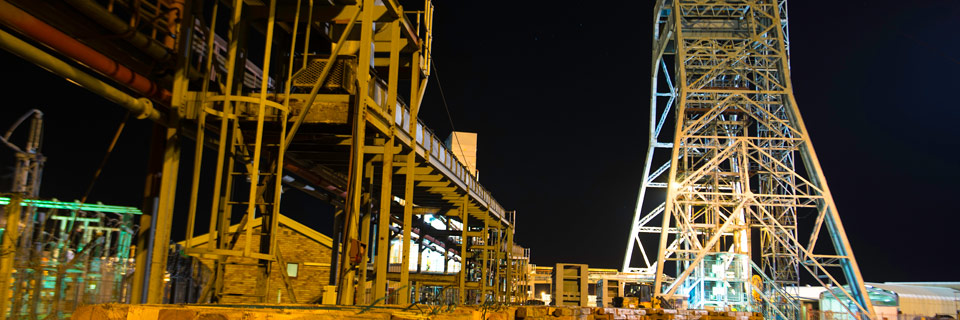
| FY14 | FY13 | FY12 | |
|---|---|---|---|
| Number of employees | |||
| – Permanent | 3 460 | 3 708 | 3 603 |
| – Contractors | 325 | 332 | 373 |
| Total | 3 785 | 4 040 | 3 976 |
| Operational | |||
| Volumes milled (000t) | 577 | 512 | 521 |
| Gold produced (kg) | 2 976 | 2 434 | 2 541 |
| Gold produced (oz) | 95 680 | 78 255 | 81 695 |
| Grade (g/t) | 5.16 | 4.75 | 4.88 |
| Productivity (g/TEC) | 70.72 | 53.87 | 61.84 |
| Development results | |||
| Total metres (excl. capital metres) | 11 298 | 10 684 | 12 434 |
| Reef metres | 1 364 | 1 191 | 1 908 |
| Capital metres | 101 | 184 | 75 |
| Financial | |||
| Revenue (Rm) | 1 284 | 1 103 | 1 064 |
| Average gold price received (R/kg) | 433 199 | 455 063 | 420 788 |
| Production profit/(loss) (Rm) | 223 | 121 | 261 |
| Capital expenditure (Rm) | 360 | 337 | 302 |
| Cash operating cost (R/kg) | 358 995 | 405 077 | 319 317 |
| All-in sustaining cost (R/kg) | 486 710 | 549 340 | 432 529 |
| Safety | |||
| No of fatalities | 1 | 1 | 0 |
| Lost-time injury frequency rate per million hours worked | 7.73 | 8.80 | 8.87 |
| Environmental | |||
| Electricity consumption (GWh) | 126 | 113 | 109 |
| Water consumption – primary activities (ML) | 1 090 | 880 | 4 167 |
| greenhouse gas emissions (000t CO2e) | 125 | 112 | 108 |
| Intensity data per tonne treated | |||
| – energy | 0.22 | 0.22 | 0.21 |
| – water | 1.89 | 1.72 | 7.99 |
| – greenhouse gas emissions | 0.22 | 0.22 | 0.21 |
| Number of reportable environmental incidents | 0 | 0 | 0 |
| Community | |||
| Local economic development (Rm)* | 11 | 8 | 3 |
| Training and development (Rm) | 30.1 | 26.0 | 24.0 |
* Included in the total for FY14 is an amount of R4 million that was capitalised as part of the hostel upgrades
The production strategy at Phakisa to concentrate on grade maintenance and increase ore tonnages yielded positive results. Completion of the ventilation shaft rehabilitation will contribute to improved underground working conditions and have a beneficial effect on production – ventilation constraints had been delaying development. Ventilation and cooling (refrigeration) are critical to delivery on the production plan and are being addressed.
The future focus of production will be on the reserves to the north of the shaft where the high-grade distribution is less erratic. This poses several challenges, not least with regard to hoisting, and several projects have been implemented to decrease the hoisting cycle of the rock winder.
Major project capital expenditure is nearing completion with most of the infrastructure at the mine having been completed.
However, all-in sustaining cash costs remained the highest in the group and need to be reduced. This is expected to be achieved in 2015-16. Although Phakisa is currently not profitable, the build-up in production is on track. A revised production plan is being compiled. Development will focus on achieving greater mining flexibility with regard to face length.
A revised feasibility study on the Phakisa decline project indicated that a large amount of capital was required to complete development of the decline project. To ensure that Phakisa meets the planning factors in terms of Harmony's overall strategy, it has been decided to discontinue development of the decline. An impairment of R1.38 billion has been recorded in Harmony's financial results for the year.
A portion of the Phakisa project area will be more efficiently mined from Tshepong's mining infrastructure and has been included in Tshepong's business plan. We will re-consider the Phakisa decline project in future, as the project as a whole is worth investing in.